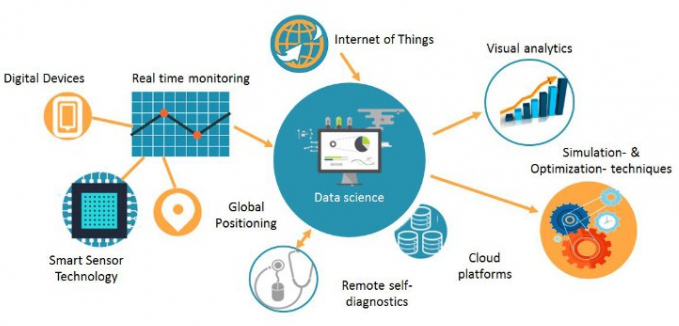Enhancing IoT Performance: Essential Monitoring and Maintenance Practices
The Internet of Things (IoT) has transformed industries by allowing devices to communicate, automate operations, and perform perfectly in a wide range of contexts. These devices' efficiency can be impacted by continuing difficulties such as overheating, wear and tear, and data storage limitations. Proactive monitoring of critical components such as CPUs, GPUs, and SD cards is critical to ensuring their longevity and performance. Users may ensure consistent performance, reduce downtime, and extend the life of their IoT systems by adding cutting-edge technologies and preventative measures.

High temperatures are a significant risk to IoT devices. IoT Monitoring tools help ensure that components like the CPU and GPU remain within safe temperature thresholds. Methods include:
Tools and Techniques:
- Command-Line Utilities: Tools like `vcgencmd` provide real-time temperature readings on Raspberry Pi devices.
- Automated Scripts: Python scripts can log temperature data and trigger alerts when thresholds are exceeded.
- Remote Monitoring Platforms: Solutions like RemoteIoT offer dashboards for real-time temperature tracking and alerting.
Key Benefits:
- Preventing overheating and hardware damage.
- Ensuring optimal performance.
- Automating temperature tracking for large-scale IoT setups.
Assessing SD Card Health
The SD card is a critical storage component in IoT devices, but it is susceptible to degradation. Monitoring its health helps users prevent data loss and system disruptions.
Methods to Monitor SD Card Health:
- Built-in Diagnostics: Use SMART-enabled SD cards to monitor wear levels and bad sectors.
- Third-Party Tools: Applications like H2testw or Disk Utility can detect errors and assess card reliability.
- Remote Monitoring Platforms: RemoteIoT offers detailed insights into SD card status, including:
- Remaining lifespan.
- Number of errors.
- Spare capacity rate.
Remote Monitoring Solutions
For large-scale IoT deployments, centralized monitoring platforms like RemoteIoT simplify device management.
Features of remote monitor IoT:
- Unified Dashboard: View multiple devices and their performance metrics in one place.
- Custom Alerts: Set thresholds for CPU, GPU, or SD card health to receive notifications.
- Historical Analysis: Access historical data to identify trends and make informed maintenance decisions.
Benefits:
- Reduced downtime through proactive issue resolution.
- Simplified management for diverse IoT networks.
- Enhanced scalability for expanding IoT ecosystems.
Best Practices for Maintaining IoT Devices
While monitoring is essential, taking preventive measures ensures IoT devices remain efficient and durable. Proactively maintaining key components like CPUs and SD cards can significantly extend their lifespan and minimize operational disruptions.
Key Maintenance Tips:
- Cooling Solutions: Use heat sinks, fans, or proper ventilation to prevent overheating and ensure stable performance.
- High-Quality Components: Invest in robust SD cards with wear-leveling and error correction for enhanced reliability.
- Data Backup: Regularly back up critical data to prevent loss in case of system failures.
- Minimize Writes: Limit unnecessary write cycles on SD cards to reduce wear and prolong their lifespan.
Combining regular monitoring with these practices ensures optimal functionality and long-term dependability for IoT systems.
Conclusion
For IoT devices to be trustworthy, effective, and long-lasting, performance and health monitoring are required. Important components such as the CPU, GPU, and SD cards are critical for guaranteeing smooth operation, but they are also vulnerable to operational and environmental stress. Users may gain real-time insights into device information and take proactive efforts to remedy any issues by using tools such as command-line utilities, Python scripts, and complex platforms such as RemoteIoT.
Additionally, device longevity is increased by adhering to suggested practices, which include making sure the device is properly cooled, using high-quality SD cards, and minimizing unnecessary write operations. IoT devices may continue to be robust and practical for many years to come with regular monitoring and preventative maintenance.
